Tanzania is a country in East Africa situated within the African Great Lakes region. It is bordered by Kenya and Uganda to the north; Rwanda, Burundi, and the Democratic Republic of the Congo to the west; and Zambia, Malawi, and Mozambique to the south; and the Indian Ocean to the east. Kilimanjaro, Africa's highest mountain, is in northeastern Tanzania.
Climate varies greatly within Tanzania. In the highlands, temperatures range between 10 and 20 °C (50 and 68 °F) during cold and hot seasons respectively. The rest of the country has temperatures rarely falling lower than 20 °C (68 °F). The hottest period extends between November and February (25–31 °C or 77.0–87.8 °F) while the coldest period occurs between May and August (15–20 °C or 59–68 °F). Annual temperature is 20 °C (68.0 °F). The climate is cool in high mountainous regions.
Over 100 different languages are spoken in Tanzania, making it the most linguistically diverse country in East Africa.
Among the languages spoken in Tanzania are all four of Africa's language families: Bantu, Cushitic, Nilotic, and Khoisan. Swahili and English are Tanzania's official languages.
Current statistics on religion are unavailable because religious surveys were eliminated from government census reports after 1967. Religious leaders and sociologists estimate that Muslim and Christian communities are approximately equal in size, each accounting for 30 to 40 percent of the population, with the remainder consisting of practitioners of other faiths, indigenous religions, and people of no religion. According to recent estimates 35% of the population is Muslim, 30% is Christian and 35% practice the Traditional African religion.[118] Of Muslims, 16% are Ahmadiyya, 20% are non-denominational Muslims, 40% are Sunni, 20% are Shia and 4% are Sufi.
Tanzanian cuisine is both unique and widely varied. Along the coastal regions (Dar es Salaam, Tanga, Bagamoyo, Zanzibar, and Pemba), spicy foods are common, and there is also much use of coconut milk. Regions in Tanzania's mainland also have their own unique foods. Some typical mainland Tanzanian foods include rice (wali), ugali (maize porridge), chapati (a kind of bread), nyama choma (grilled meat),mshikaki (marinated beef), fish, pilau, biryani, and ndizi-nyama (plantains with meat). Commonly used vegetables include bamia (okra),mchicha (a kind of spinach), njegere (green peas), maharage (beans), and kisamvu (cassava leaves). Famous Snacks: maandazi (fried dough), isheti, kashata, kebab (kabaab), samosa (sambusa), mkate wa kumimina (Zanzibar rice bread), vileja, vitumbua (rice patties), bagia, and many others.
This is cabbage that has been cooked in beef stock, red pepper and onions.
This is a mush made of cornmeal by pounding corn to squeeze out cornstarch.
These are little cakes made of rice.
This is a flat bread that is fried.
This dish is made up of brown sugar, melted butter and fried bananas.
This is a dish that is traditional to Tanzania. It has minced beef, garlic, coconut, lime and tomatoes.
This salad is made of mashed avocados that are mixed with beans and rice.
This is roasted meat that is made with spices, lemon juice and garlic.
This soup is made of beans, green peppers, onions and coconut milk.
This is a Tanzanian delicacy that is made when duckling is cooked with tomatoes, red peppers and onions.
Rail Travel :
Most transport in Tanzania is by road; road transport constitutes over 75 percent of the country's freight traffic and 80 percent of its passenger traffic. The 86,500-kilometer road system is in generally poor condition. Tanzania has two railway companies: TAZARA, which provides service between Dar es Salaam and Kapiri Mposhi (in a copper-mining district in Zambia), and Tanzania Railways Limited, which connects Dar es Salaam with central and northern Tanzania. Rail travel in Tanzania often entails slow journeys with frequent cancellations or delays; the railways also have a deficient safety record. Tanzania has four international airports, along with over 100 small airports or landing strips; airport infrastructure tends to be in poor condition. Airlines in Tanzania include Air Tanzania,Precision Air, Fastjet, Coastal Aviation, and ZanAir. Several modern hydrofoil boats provide transportation across the Indian Ocean between Dar es Salaam and Zanzibar.
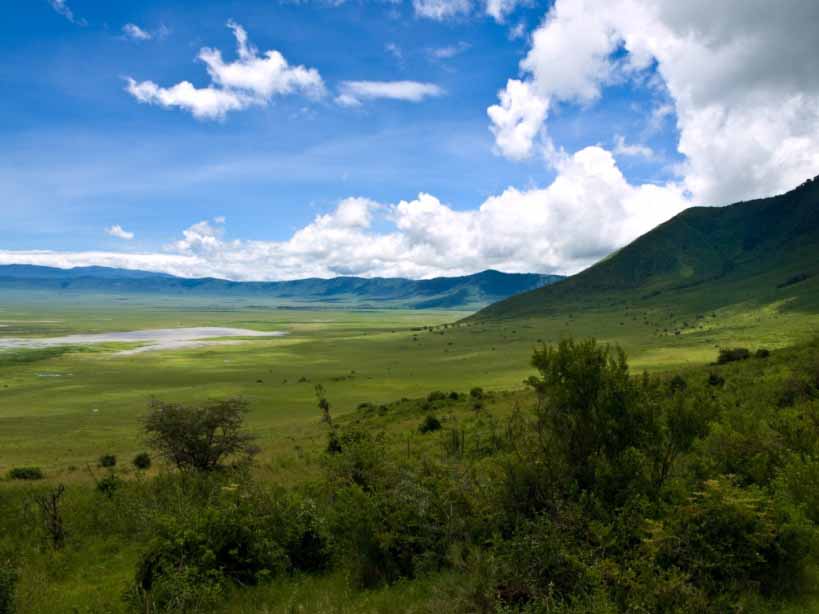
The Ngorongoro Crater is often called as the ‘Africa’s Eden’ and the ’8th Natural Wonder of the World’. It has as well being declared as one of the Seven Natural Wonders of Africa. A visit to the crater is a main draw card for tourists coming to Tanzania and a definite world-class attraction. Within the crater rim, large herds of zebra and wildebeest graze nearby while sleeping lions laze in the sun. At dawn, the endangered black rhino returns to the thick cover of the crater forests after grazing on dew-laden grass in the morning mist. Just outside the crater’s ridge, tall Masaai herd their cattle and goats over the green pastures through the highland slopes, living alongside the wildlife as they have for centuries.
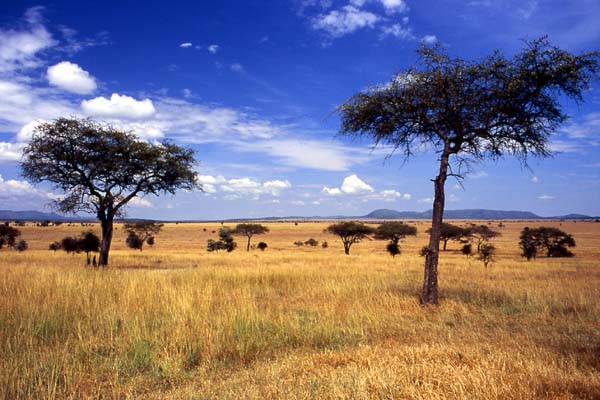
A million wildebeests each one driven by the same ancient rhythm, fulfilling its instinctive role in the inescapable cycle of life: a frenzied three-week bout of territorial conquests and mating; survival of the fittest as 40km (25 mile) long columns plunge through crocodile-infested waters on the annual exodus north; replenishing the species in a brief population explosion that produces more than 8,000 calves daily before the 1,000 km (600 mile) pilgrimage begins again.
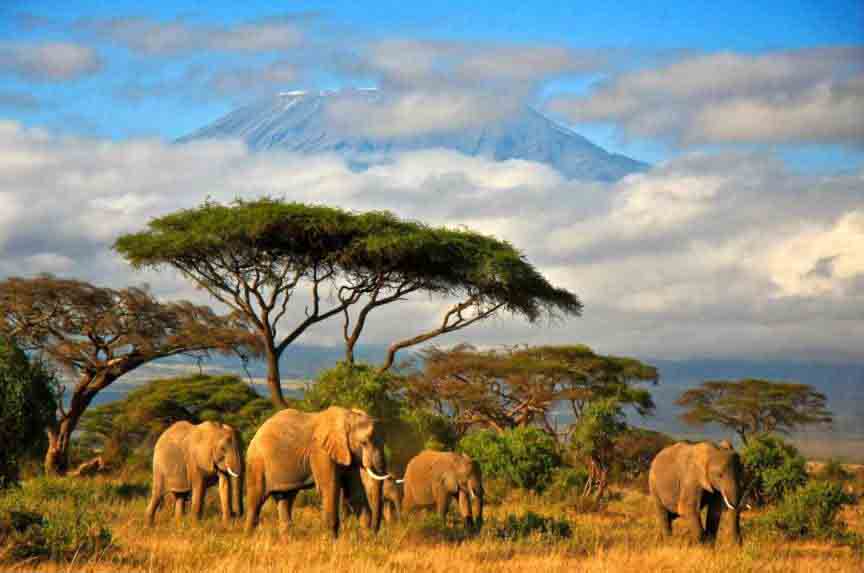
Tarangire National Park has some of the highest population density of elephants anywhere in Tanzania, and its sparse vegetation, strewn with baobab and acacia trees, makes it a beautiful and distinct location. Located just a few hours’ drive from the town of Arusha, Tarangire is a popular stop for safari goers travelling through the northern circuit on their way toNgorongoro and the Serengeti. The park extends into two game controlled areas and the wildlife is allowed to move freely throughout.
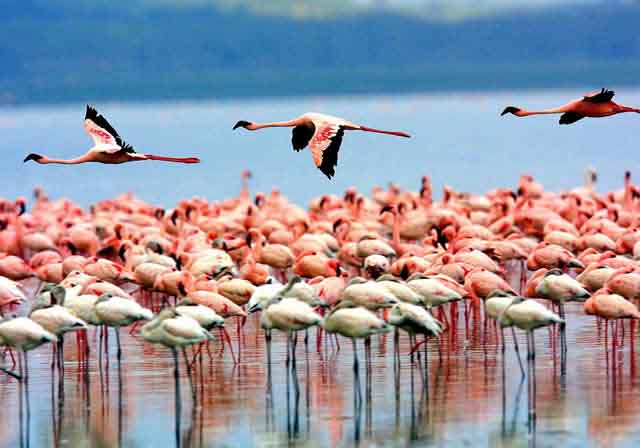
Located beneath the cliffs of the Manyara Escarpment, on the edge of the Rift Valley, Lake Manyara National Park offers varied ecosystems, incredible bird life, and breathtaking views. Located on the way to Ngorongoro Crater and the Serengeti, Lake Manyara National Park is worth a stop in its own right. Its ground water forests, bush plains, baobab strewn cliffs, and algae-streaked hot springs offer incredible ecological variety in a small area, rich in wildlife and incredible numbers of birds.
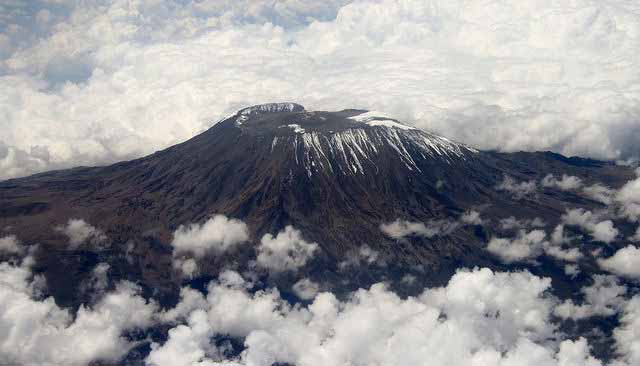
Above the gently rolling hills and plateaux of northern Tanzania rises the snowy peak of Mt. Kilimanjaro, it’s slopes and glaciers shimmering above the rising clouds. Kilimanjaro is located near the town of Moshi and is a protected area, carefully regulated for climbers to enjoy without leaving a trace of their presence. The mountain’s ecosystems are as strikingly beautiful as they are varied and diverse. On the lowland slopes, much of the mountain is farmland, with coffee, banana, cassava, and maize crops grown for subsistence and cash sale. A few larger coffee farms still exist on the lower slopes, but much of the area outside the national park has been subdivided into small plots. Once inside the park, thick lowland forest covers the lower altitudes and breaks into alpine meadows once the air begins to thin. Near the peak, the landscape is harsh and barren, with rocks and ices the predominant features above a breathtaking African view.
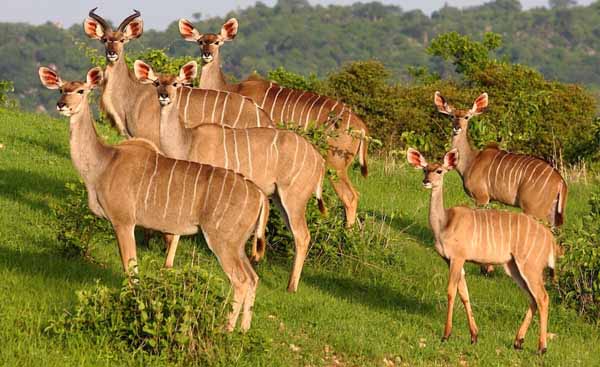
The game viewing starts at the moment the plane touches down. A giraffe races beside the airstrip, all legs and neck, yet oddly elegant in its awkwardness. A line of zebras parades across the runway in the giraffe’s wake. In the distance, beneath a bulbous baobab tree, a few representatives of Ruaha’s 10,000 elephants – the largest population of any East African national park, form a protective huddle around their young. Second only to Katavi in its aura of untrammeled wilderness, but far more accessible, Ruaha protects a vast tract of the rugged, semi-arid bush country that characterizes central Tanzania.
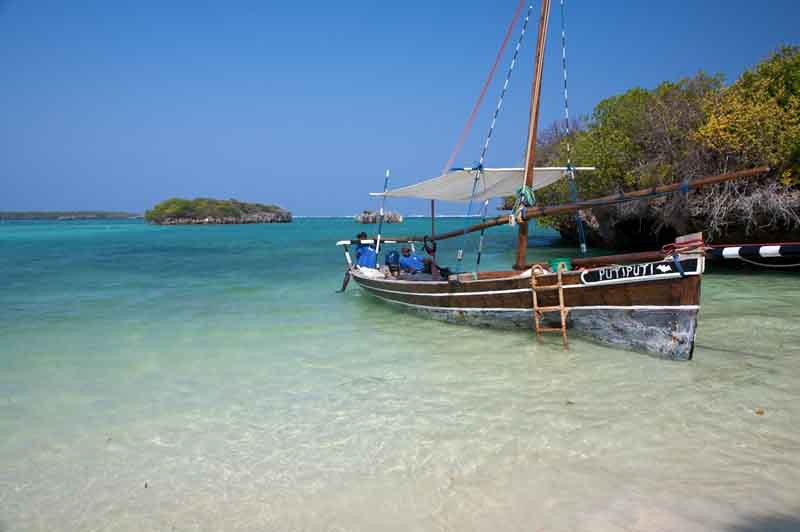
Mafia Island is a popular destination for visitors to relax after their safari and the island’s relaxed and secluded beaches offer privacy and comfort for discerning travelers. Mafia’s incredible and un-spoilt dive sites have remained a well-kept secret of diving aficionados and beach recluses for years, but now the island is fast becoming a preferred destination.

Climbing Mt. Meru is usually skipped in favor of its larger neighbor Mt. Kilimanjaro to the west, but the sheer beauty and challenge of this three-day climb makes it a must-to-do activity for obliging itineraries. The early parts of the trail pass through lush rainforests of fig trees and colubus monkeys high in the canopy. As you climb higher, the cloudy forest clears in the late afternoon to reveal striking vistas of Kilimanjaro and the volcano chain on the edge of the Rift Valley. The last distance before the summit passes over the crater ridge. It is an exhilarating experience, and it is not one for the faint-hearted. So while Kilimanjaro offers the chance to scale to the ‘roof of Africa’; its slightly smaller neighbor is certainly not lacking the adventure.
04 Stars:
The hotel offers a snack bar/deli. A bar/lounge is on site where guests can unwind with a drink. Guests can enjoy a complimentary breakfast. An Internet point is located on site and high-speed wireless Internet access is complimentary.
17B Obour Bldgs, Salah Salem Rd., Heliopolis, Cairo, Egypt
marketing@canyon.travel
operation@canyon.travel
02-22 62 50 54/44